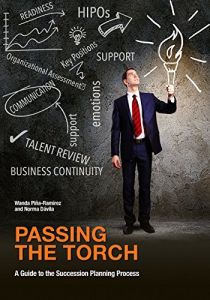Join getAbstract to access the summary!

Join getAbstract to access the summary!
Norma Dávila and Wanda Piña-Ramirez
Passing The Torch
A Guide to the Succession Planning Process
ASTD Publications, 2015
What's inside?
Know your talent pool – and be prepared for the departure of crucial executives and employees.
Recommendation
Many companies fail to plan for the departure of critical executives and employees. Without a formal succession plan, the leaders of any organization of more than a few hundred employees can’t keep track of everyone critical to running the business, much less when they might leave and what it would take to replace them. You will find everything you need to execute an effective succession plan – templates, charts, worksheets and guides to best practices – in this slim volume. Talent development consultants Wanda Piña-Ramirez and Norma Dávila offer a practical, action-oriented manual that takes you from thinking about succession planning to building a “business case,” assembling a project team, creating and executing the plan, and measuring the results. Though this handbook is not for small businesses, getAbstract recommends the authors’ advice and techniques to CEOs, HR managers, learning officers, and all leaders of midsize or large organizations who must plan for the departure of critical talent.
Summary
About the Authors
Wanda Piña-Ramirez and Norma Dávila operate the Human Factor Consulting Group in Puerto Rico. Each is a past president of an ATD chapter.


















Comment on this summary